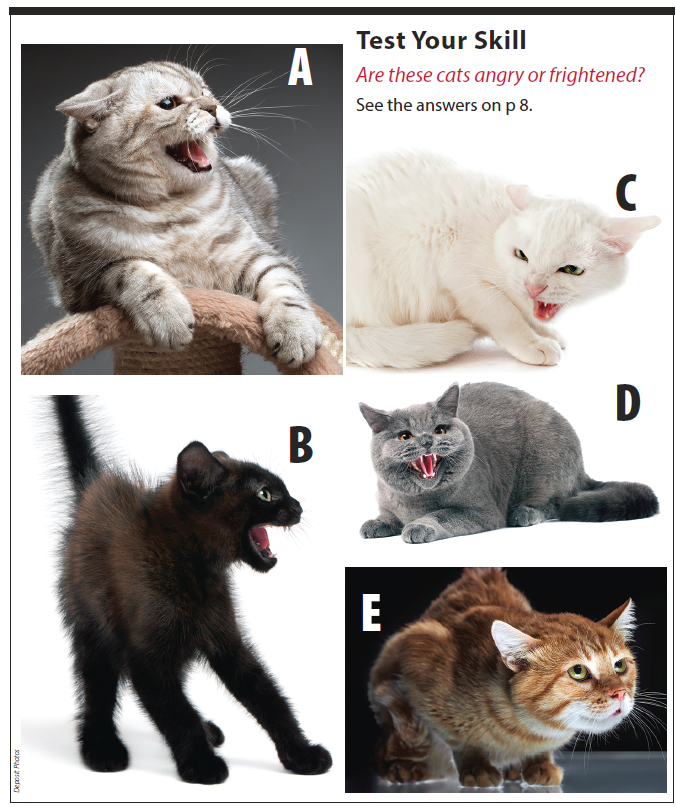Cats are known for their independent and mysterious nature, which can make it difficult to understand their emotions. However, there are certain signs that can help you determine if your feline friend is feeling angry or upset. By being aware of these cues, you can better respond to your cat’s needs and prevent any potential negative behavior. In this article, we will explore the various indicators that can help you identify if your cat is angry.
1. Tail Position
One of the key indicators of a cat’s emotional state is their tail position. When a cat is angry, their tail tends to puff up and stand upright or it may thrash from side to side vigorously. This is a clear signal that your cat is feeling annoyed or agitated. It is important to give your cat space and avoid any sudden movements that may further escalate their anger.

Credit: www.rd.com
2. Ears Back
Another sign of an angry cat is if their ears are flattened or pulled back against their head. This is a defensive posture that indicates your cat’s discontent. When you notice this, it is best to avoid touching or approaching your cat, as they may respond aggressively. It’s important to remember that snapping or biting can be a reaction to fear or feeling threatened.

Credit: www.catwatchnewsletter.com
3. Hissing and Growling
Hissing and growling are vocal cues that cats use to communicate their anger. If your cat hisses or growls, it is a clear indication that they are feeling angry or threatened. They may arch their back, puff up, and make themselves look bigger to intimidate any potential threats. It is essential to give your cat space and allow them to calm down naturally without attempting to approach or comfort them.
4. Swatting and Scratching
When a cat is angry, they may resort to swatting or scratching. This behavior can be a sign of frustration and can inflict harm if not carefully handled. If your cat displays aggressive behavior, it is important to remove yourself from the situation and let them cool down on their own terms.
5. Dilated Pupils
Another clue to a cat’s angry state is their eye expression. When agitated, a cat’s pupils may become dilated, making their eyes appear larger. Dilated pupils can also indicate fear or arousal. If you notice your cat’s eyes are wide open with dilated pupils, it is best to keep some distance to avoid any confrontations.
6. Body Language
Observing your cat’s overall body language can help you understand their emotional state. If your cat is angry, they may adopt a defensive stance by crouching low to the ground with their fur standing on end. They may also display a stiff body posture. Paying attention to these cues can help you determine if your cat is upset and require some time alone to calm down.
7. Vocalization
Cats may express their anger through various vocalizations such as yowling, moaning, or growling. These sounds can indicate that your cat is feeling frustrated or unhappy. It’s important to note that every cat has a unique vocalization style, so being familiar with your own cat’s normal range of sounds will help you identify if they are expressing anger.
Frequently Asked Questions On How To Tell If A Cat Is Angry
How Can I Tell If My Cat Is Angry?
A cat’s body language can indicate anger. Look for flattened ears, dilated pupils, and a lashing tail.
Why Is My Cat Hissing And Growling?
Cats hiss and growl when they feel threatened or scared. It’s their way of warning others to stay away.
What Are The Signs Of An Aggressive Cat?
Aggressive cats may display signs like biting, scratching, and excessive vocalization. They may also have a tense body posture.
How Do I Calm Down An Angry Cat?
To calm an angry cat, offer a safe space, avoid sudden movements, and use calming techniques like soft music or pheromone sprays.
Conclusion
Understanding your cat’s emotions, including their anger, is crucial for maintaining a healthy and harmonious relationship. By being aware of the various signs discussed above, you can better respond to your cat’s needs, avoiding any potential negative behavior and keeping both you and your feline friend safe and happy. Remember, always give your cat the space and respect they need to calm down, and seek professional advice if your cat’s anger issues persist.
Leave a Reply